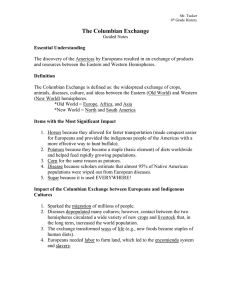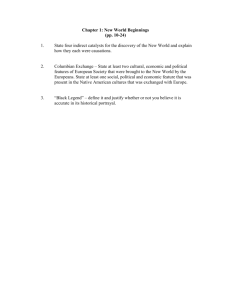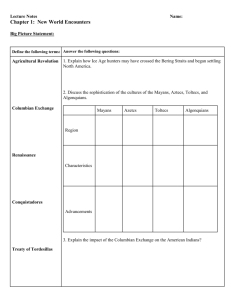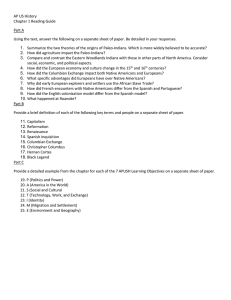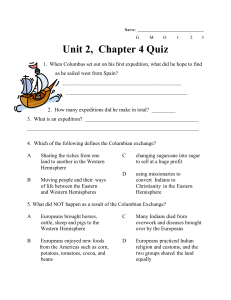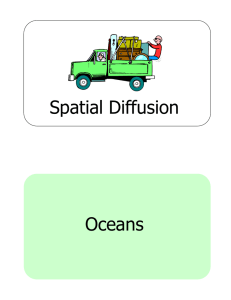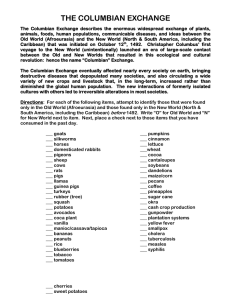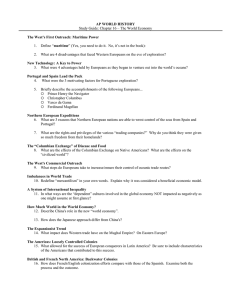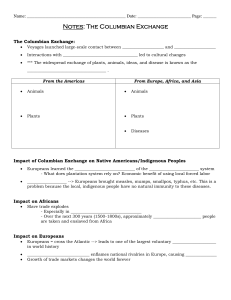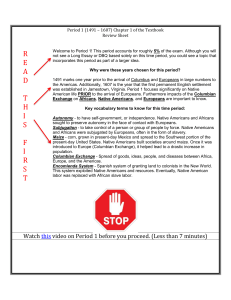1. What was the Columbian Exchange?
advertisement
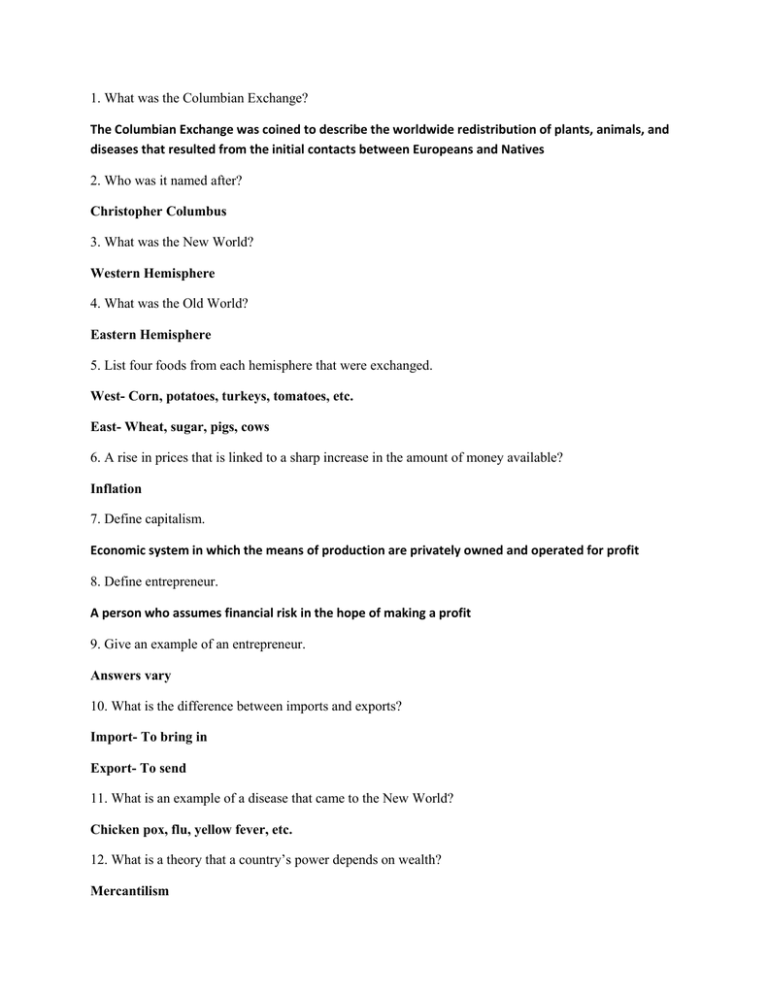
1. What was the Columbian Exchange? The Columbian Exchange was coined to describe the worldwide redistribution of plants, animals, and diseases that resulted from the initial contacts between Europeans and Natives 2. Who was it named after? Christopher Columbus 3. What was the New World? Western Hemisphere 4. What was the Old World? Eastern Hemisphere 5. List four foods from each hemisphere that were exchanged. West- Corn, potatoes, turkeys, tomatoes, etc. East- Wheat, sugar, pigs, cows 6. A rise in prices that is linked to a sharp increase in the amount of money available? Inflation 7. Define capitalism. Economic system in which the means of production are privately owned and operated for profit 8. Define entrepreneur. A person who assumes financial risk in the hope of making a profit 9. Give an example of an entrepreneur. Answers vary 10. What is the difference between imports and exports? Import- To bring in Export- To send 11. What is an example of a disease that came to the New World? Chicken pox, flu, yellow fever, etc. 12. What is a theory that a country’s power depends on wealth? Mercantilism 13. The period in European history when inflation rose rapidly is known as what? Price Revolution 14. A tax on imported goods? Tariff 15. How was the Columbian Exchange positive and negative? Positive- New plants, animals, and foods were discovered. Potatoes and corn became major food sources for Europeans allowing populations to increase greatly Negative- The diseases the Europeans brought with them killed up to 90% of the Native Americans in the New World. European conquest of the Native Americans was made easy by the effect disease had on the Natives
